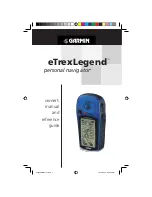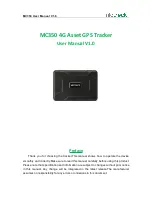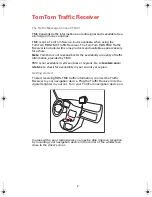
18
5.5 Logging Commands
The following sections introduce commands related to the CT5501 logging system.
5.5.1 LOGCLEAR – Clear log data
Erases logs in CT5501’s memory.
$PFST,LOGCLEAR,<MODE>
<MODE> “Clear”
operation.
0 - Reclaim the flash file system only. Doesn’t delete any logged data,
only frees up data clusters that have been deleted but not freed yet.
1 – Delete log data (default). Deletes logged data but keeps the current
logging settings.
2 – Format the flash file system. Formats the file system used by the
logging system. Not recommended for normal use, useable only for
recovering from an extreme system disaster.
5.5.2 LOGFREE – Amount of free space for log data
Calculates how much space is available for log data.
$PFST,LOGFREE
This command outputs the amount of free space in the reply message:
$PFST,LOGFREE,<WORDS>,<ITEMS>*hh
Where <WORDS> is the amount of free space in 16bit words and <ITEMS> is how many log items
fit into the free space with the current logging settings.
5.5.3 LOGGET – Output logged data
Output logged data items. This command outputs the logged data in standard NMEA format
messages according to the current NMEA settings.
$PFST,LOGGET,<LOGNUM>,<FIRSTITEM>,<NUMITEMS>
<LOGNUM> Log
number.
<FIRSTITEM> (optional)The first item that is outputted.
If omitted, starts from the first item of the log.
<NUMITEMS> (optional) The amount of items being outputted.
If omitted, outputs all items until the end of the log.
5.5.4 LOGINFO – Show log information
Show log information, including log name, how many items have been
stored to the log and what data level has been used.
$PFST,LOGINFO,<L LOGNUM> OGNUM>
<LOGNUM> Number of the log of interest.
The log information is displayed on the reply message:
$PFST,LOGINFO,<LOGNUM>,<NAME>,<ITEMS>,<DATALEVEL>*hh
Where <NAME> is name of the log, <ITEMS> is the amount of items (data points) that are
in the log and <DATALEVEL> is the data level setting.
















































